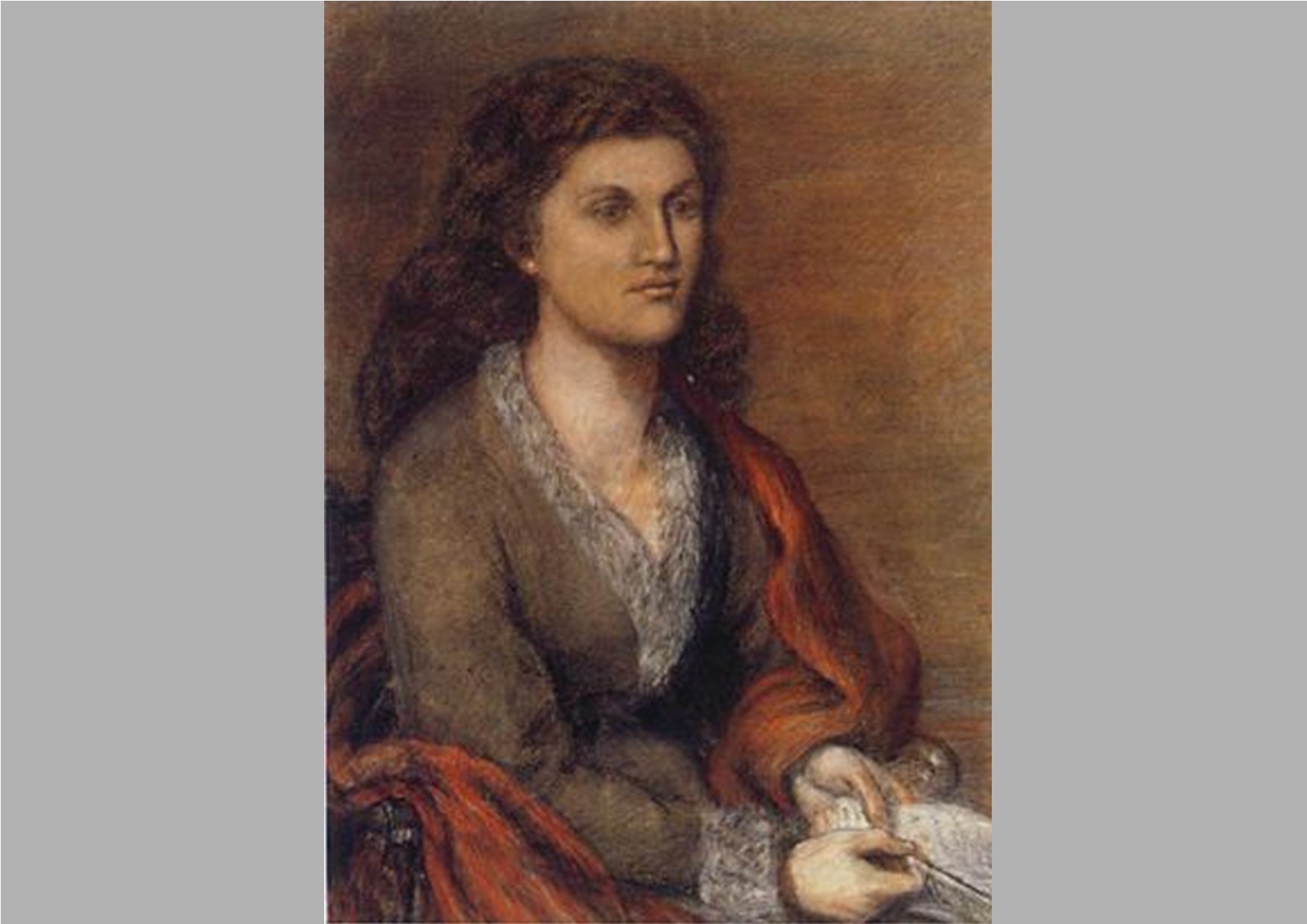
Newnham’s portrait of Mathilde Blind (1841-1896) is the earliest work in this gallery, dating from 1872, but was given to the College in 1929, the gift of Helen Chamberlain (NC 1889). Mathilde was born in 1841, the daughter of Jacob Abraham Cohen and his wife Friederike. Mathilde’s father died when she was a child and her mother remarried to Karl Blind. They immigrated to London, and the young Mathilde took her stepfather’s surname.
Blind travelled extensively in Switzerland from the age of 18, studying Latin, medieval German and literature. She set up her own household when she was 30. She continued to travel, spending part of each year in Manchester with her friend Ford Madox Brown and his family. Blind became known as a writer, her first piece appearing in the Westminster Review. Her first book, a narrative poem The Prophecy of St Oran appeared in 1881. The Ascent of Man, an epic poem inspired by Charles Darwin’s theory of evolution, is considered her masterpiece.
In the mid-1890s Blind spent time in Cambridge, her purpose being a serious one; she was conscious of her failing health and wished to use her estate to support women’s education. After visiting several institutions, she chose Newnham as that which was most aligned to her ideals. Blind died in London in 1896 and left her residuary estate to the College to provide scholarships to study ‘English or Foreign or Ancient Literature’.
Lucy Madox Brown (1843 – 1894) was the eldest daughter of Blind’s friend the artist Ford Madox Brown. Through their father, Lucy and her sister Catharine were closely associated with members of the pre-Raphaelite circle, including the Rossettis, Burne-Jones, William Morris, Holman Hunt and another woman artist Marie Spartali.
Lucy’s mother had died when she was a baby, so she was brought up by an aunt. She later moved to her father’s home once he could afford a larger house in London. Lucy often modelled for her father, providing, for example, the hand of the woman in his painting The Last of England. She worked for a while as his studio assistant and secretary, receiving training from him through classes which he organised for other women pupils. She then studied art at the School of Design. Lucy began to exhibit in 1869, one painting being accepted for the Royal Academy exhibition of 1871. Lucy specialised in the standard Pre-Raphaelite topics of scenes from Romantic literature and history, and also painted her family and friends. Her work was well received by the critics and made a modest contribution towards her father’s finances.
In 1874, at the age of thirty-one, Lucy married an old family friend William Rossetti, brother of Dante Gabriel and Christina. He was a member of the original Pre-Raphaelite brotherhood, a writer and art critic, whose edition of Shelley’s poetry had been reviewed by Mathilde Blind in 1870. The portrait of Blind is one of the few works that Lucy produced after her marriage and is signed with her married name.
In 1999 the portrait was lent by Newnham to the exhibition Pre-Raphaelite Women Artists, which toured to Manchester, Birmingham and Southampton City Art Galleries. In 2021 it was loaned to the Watt’s Gallery in Surrey, for the exhibition Pre-Raphaelite Daughters.


